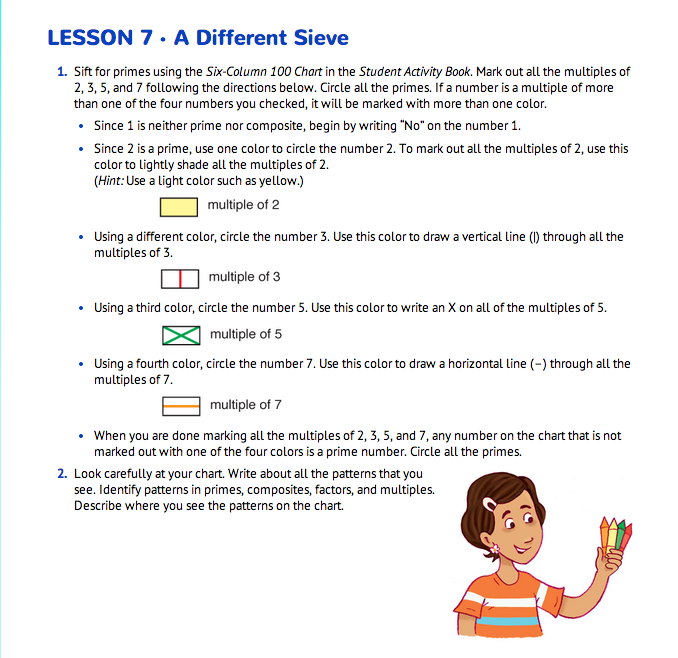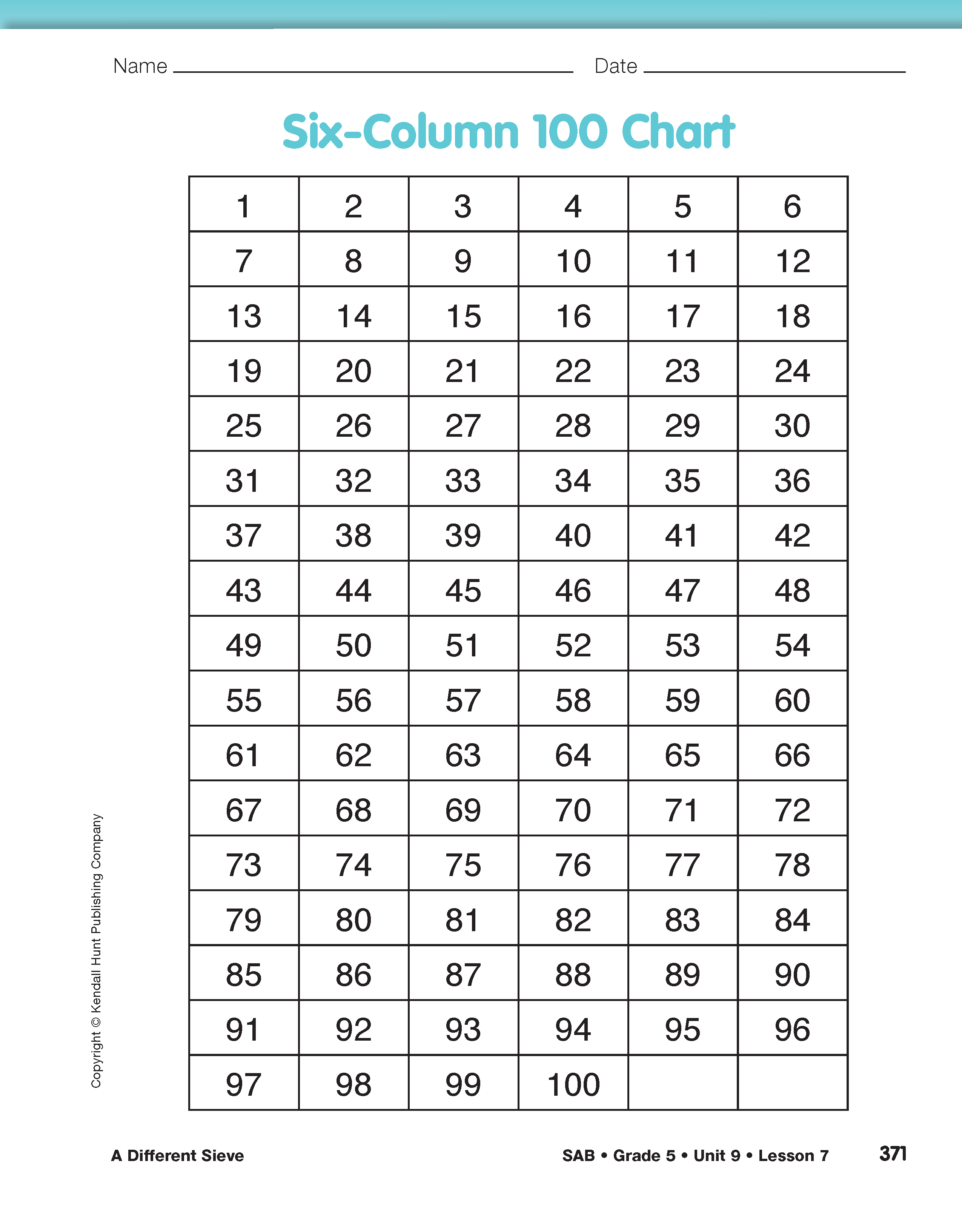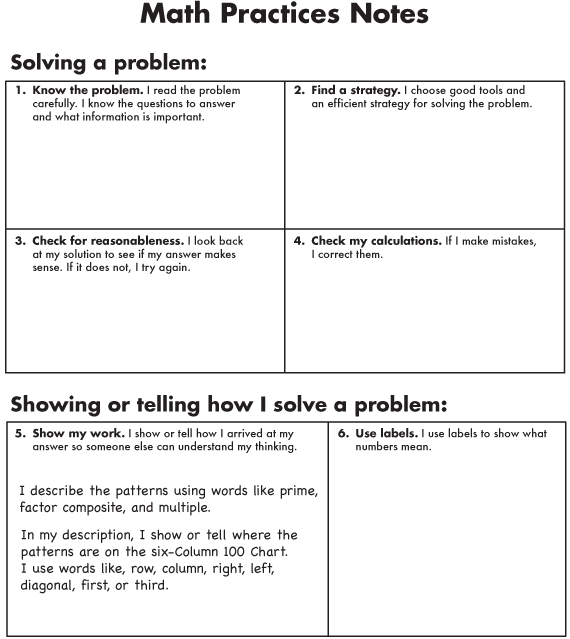A Different Sieve
Est. Class Sessions: 2Developing the Lesson
Completing the Chart. This activity is similar to the activity in Lesson 2. However, in this activity students sift for prime numbers using a Six-Column 100 Chart instead of a traditional 100 Chart. After completing the chart, they find several different patterns and write about the patterns they see.
Read the directions to A Different Sieve in the Student Guide. Make sure students understand that they will circle the prime numbers and mark out multiples of the first four prime numbers 2, 3, 5, and 7 on a Six-Column 100 Chart. They should use a different colored crayon to identify the multiples of each of these numbers. If a number is a multiple of more than one of these numbers, it should be marked with more than one color. For example, 6 is a multiple of both 2 and 3. If you shade all of the multiples of 2 yellow and draw a green, vertical line through all of the multiples of 3, then the box containing the number 6 should be marked with both yellow and green. See Figure 1.
While students should be able to complete this chart independently, you may have them work with a partner. Once a student has completed the sifting process for the multiples of the first four prime numbers, he or she is ready to look for and write about the patterns that are contained in the completed chart. See Figure 2.
Use these or similar questions to get students started or to help students find patterns in the sieve.
Ask:
Setting Problem-Solving Expectations. Give students a few minutes to identify and describe a pattern they see in the chart. Circulate and choose one or two students to share the pattern they found. Use these descriptions to review Math Practices Expectation 5. Work with the class to develop problem-specific expectations using a display of the Math Practices Notes Master. See Figure 3. As students share patterns they found, check to see that they clearly describe the pattern and how it is represented on the Six-Column 100 Chart.
Ask:
When expectations have been established, ask students to continue working to identify and describe as many patterns as they can in the Six-Column 100 Chart. Some of the patterns that students might write about include:
- All of the prime numbers, except for the numbers 2 and 3, are in the first and fifth columns.
- The prime numbers are all odd except for the number 2.
- All of the multiples of 2 are in columns two, four, and six.
- All of the multiples of 2 are even numbers.
- The multiples of 3 are in the third and sixth columns.
- Every other multiple of 3 is also a multiple of 2.
- The multiples of 5 form diagonals that begin at the right and go down.
- The multiples of 7 form diagonals that begin at the left and go down.
- Every other multiple of 5 is also a multiple of 2. These multiples end in 0.
- Every other multiple of 7 is also a multiple of 2.
- To find numbers with common factors, you can look for numbers that have the same colors. For example, 27 and 12 have 3 as a common factor because they both have the color for three in their box.
While students are writing, circulate, observe and provide feedback.
Ask:
You can also direct students to look back at their Six-Column 100 Chart to find additional information or patterns.

















